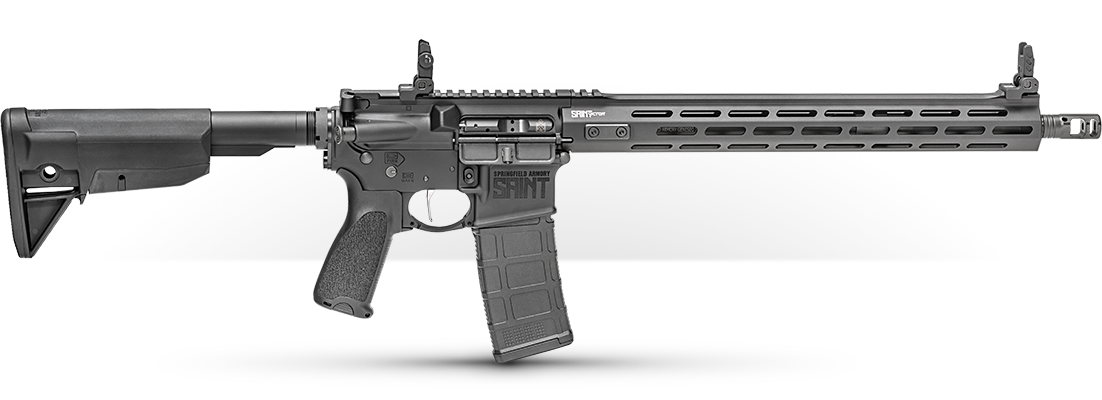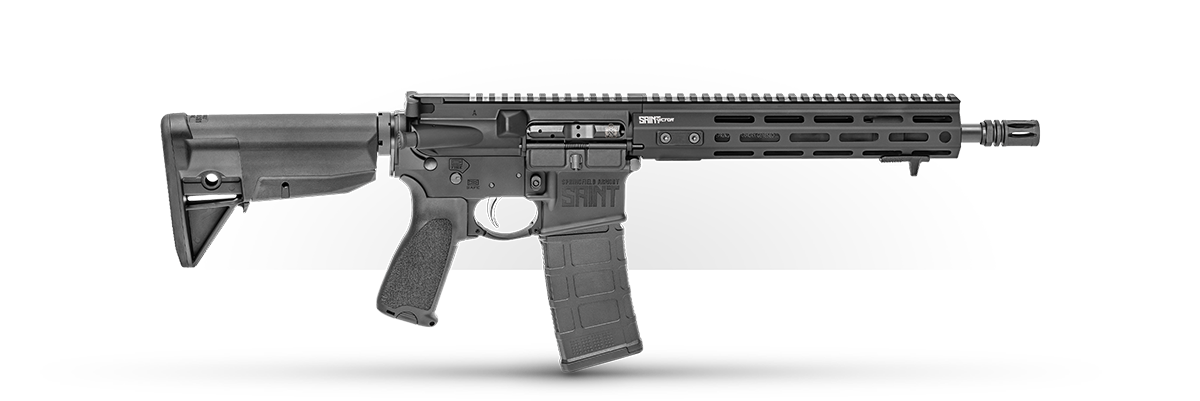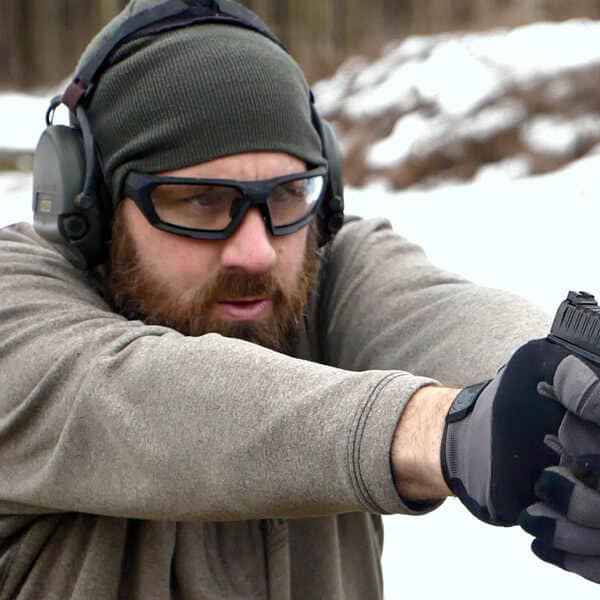When I think about AR-15s, I have a bit of a one-track mind: will it perform reliably as a home defense rifle in adverse conditions?
There is no doubt that an AR can fill a lot of different roles for a lot of different people. An AR can be a great plinking gun. Or it can be a fabulous competitive rifle. An AR-15 can be a capable hunting/varmint/predator rifle as well. My SAINT Victor 5.56 NATO certainly fills those roles well, but for me, my AR needs to be up to the most important job. All else is supplemental.
I rely on my SAINT Victor SBR and my SAINT Victor as my primary home defense guns. For that job, they need to be “duty grade.” But what does that mean, exactly?
When I think of a duty-grade gun, I think of one characteristic more than any other: reliability.
Of course, I want the gun to be accurate. I enjoy a nice trigger. I would also like it to be ergonomic. Those are all great attributes, and my SAINTs deliver.
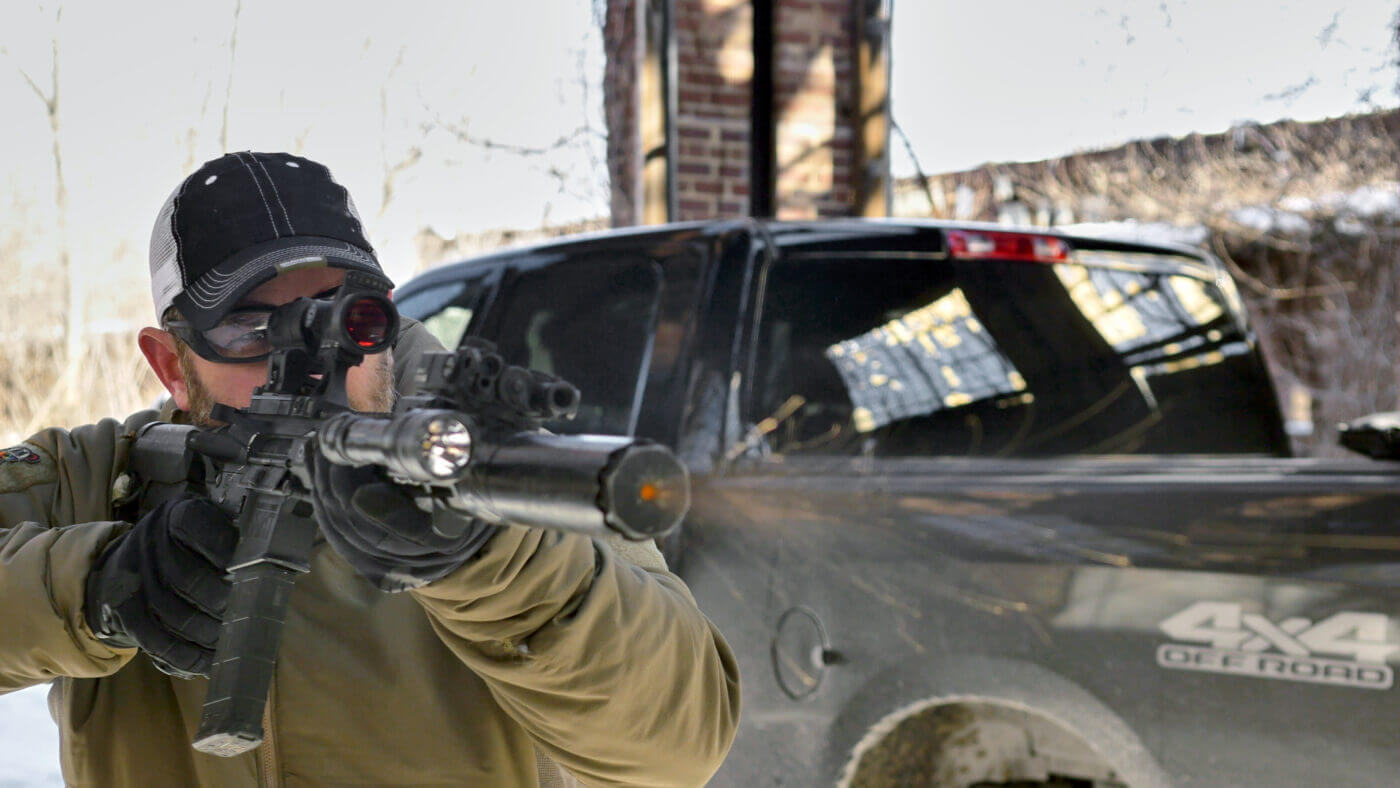
But the reality is that reliability trumps all else when it comes to duty grade. If my life or the lives of those that I love depend on a gun, that gun must run. In this Springfield SAINT Victor review, I share how I’ve tested my guns and if they are reliable enough to be considered duty grade.
How Do I Know?
Thankfully, at no time has an innocent life depended on my skill with the SAINT Victor. Hopefully, one never will.
I’m not an operator. I’m not and never have been in the military. I’m not and never have been a law enforcement officer. However, I am willing to wager my safety and the safety of those I love on the fact that my Springfield Armory SAINT Victors are ready.
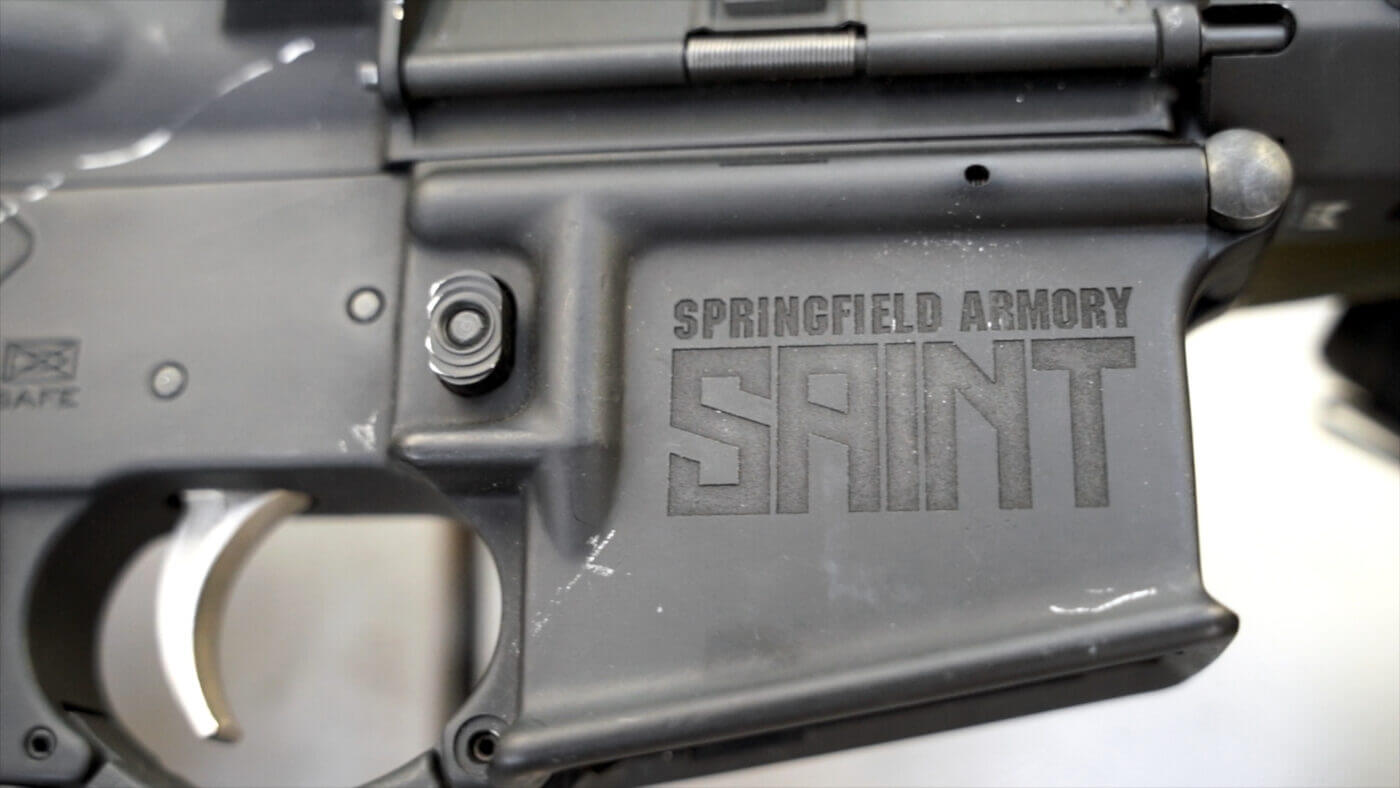
Here is how I’ve come to that conclusion: I have a job that affords me many opportunities. Over the years I have worked hard to develop a reputation as a person that is going to give well-informed and honest feedback on training and gear. This has led to lots of range time in formal training classes with quality gear.
I also happen to live less than an hour’s drive from Alliance Police Training Facility. APTF hosts the nation’s best law enforcement and civilian instructors and is run by my good friend Joe Weyer who has spent years studying the curriculum of those instructors. Joe has become an amazing resource in the training community.
I Train a Lot
My connections and location allowed me to spend in excess of 250 hours training just with my ARs over the past year. I didn’t actually keep track, so that number is a conservative guess. I took high round count live-fire courses. I’ve spent a lot of time in Force-on-Paper and Force-on-Force courses firing loads of UTM non-lethal training rounds.
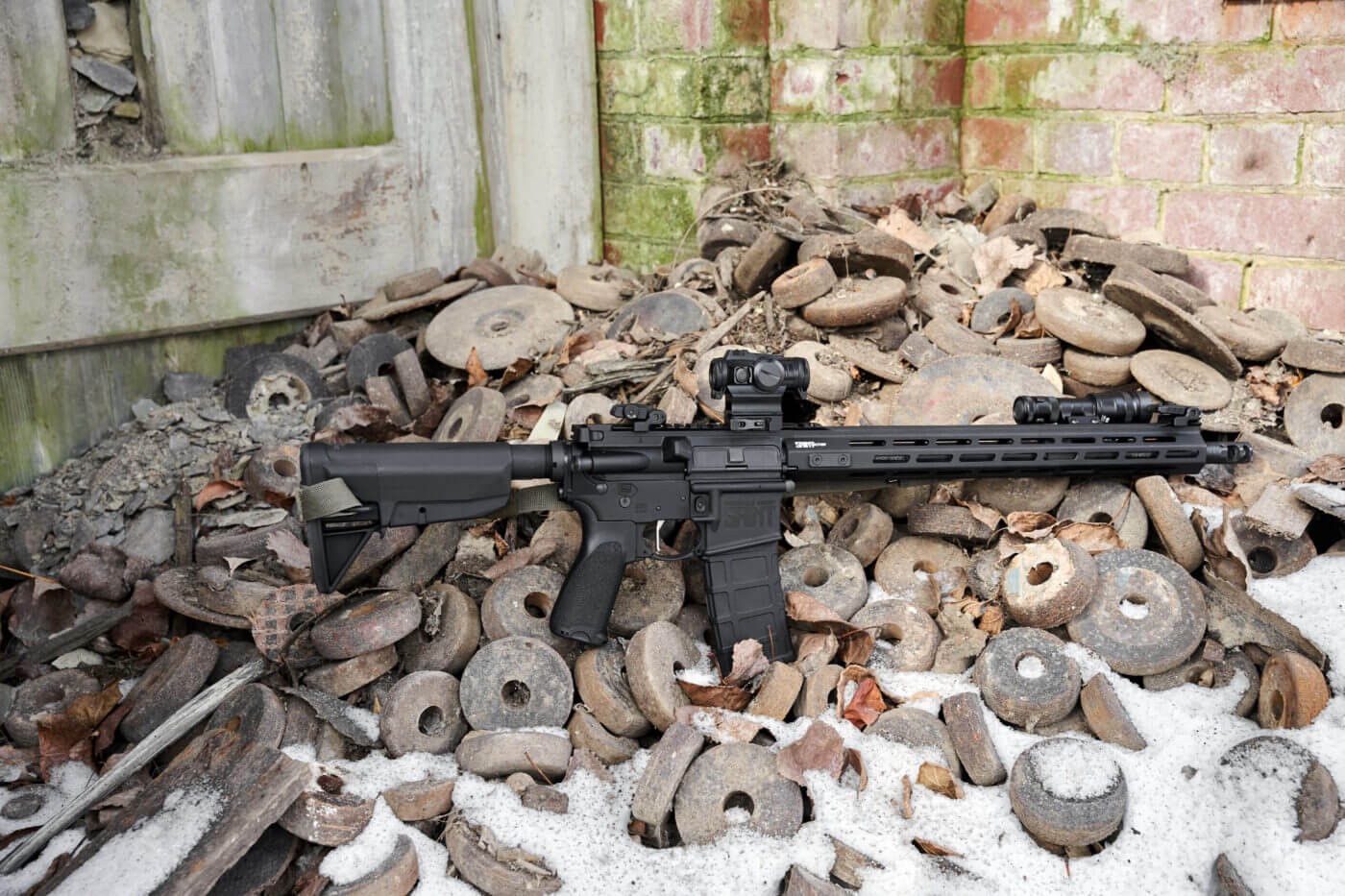
I have also taken courses that were low round count but carbine abusive. What do I mean? Imagine cutting steel with a torch, and wood and drywall with a saw, all while your rifle is slung. Courses that were primarily conducted in low light. As in more than 100 hours of training with my SAINTs in the dark with white light or under NVG.
All told that is better than six full work weeks training with my SAINT Victors. Through all that time and abuse, I made countless errors. My guns? That is a whole different story. They simply ran.
Duty Grade Features
I don’t think that my guns ran because I babied them. I keep them properly lubricated, but I haven’t given them anything but a rudimentary cleaning yet. I should clean my SAINT AR-15 more frequently, but it is what it is.
Look at the images. My guns are simply beat – but they are utterly reliable.
Over the past year, I’ve developed the opinion that My SAINT Victor ARs have run because they are duty-grade guns. But what makes them that?
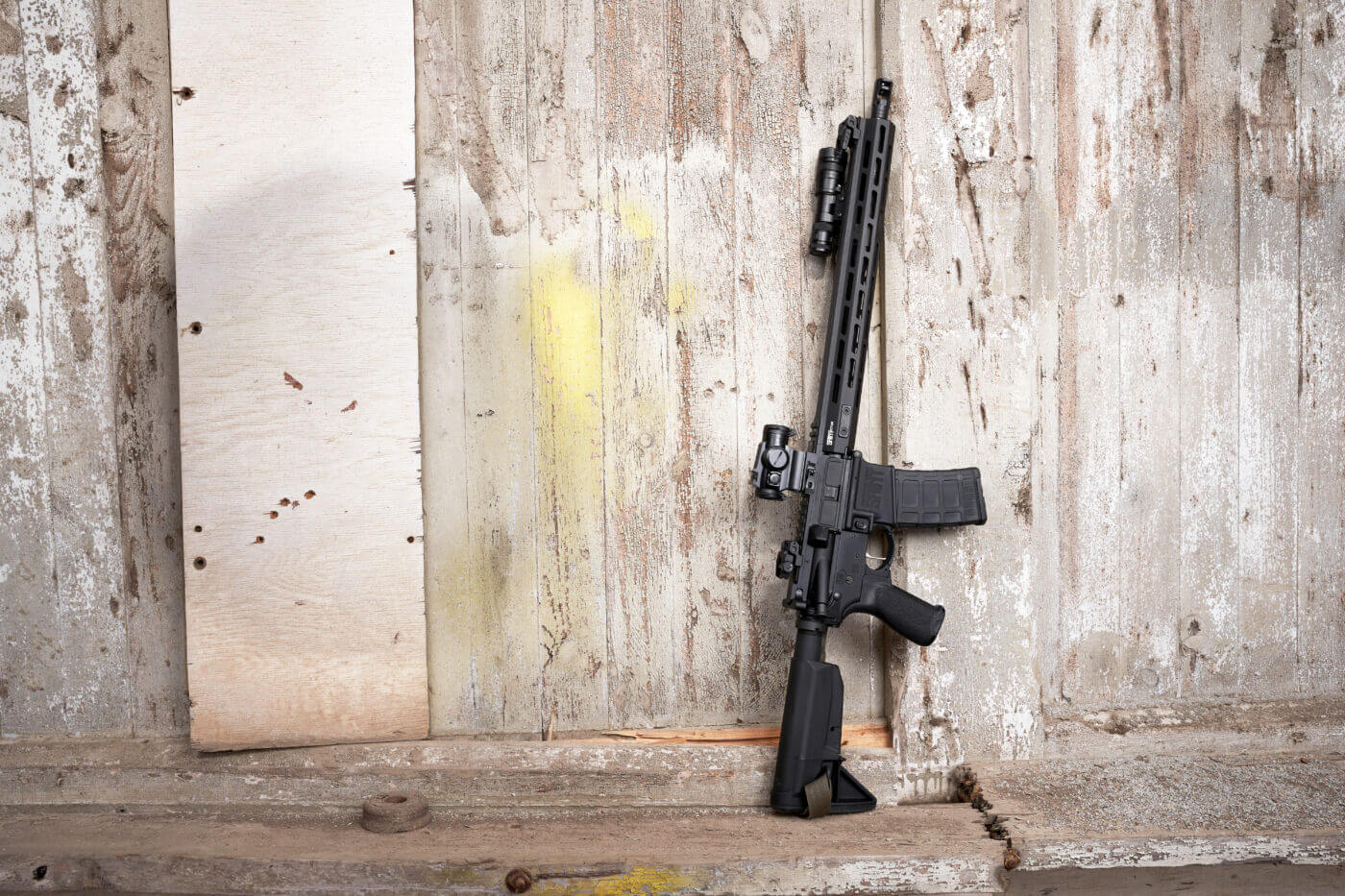
The bolt and bolt carrier group (BCG) are the heart of any AR. If the BCG fails in any way, your AR is shut down. Springfield Armory knows this and, as a result, puts extra emphasis on the quality of the bolt and carrier.
The SAINT sports an M16 bolt carrier. This does not mean the rifles are automatic — they use a semi-automatic action that has been used in civilian firearms for more than 100 years. Rather, the BCG has the durability equal to that as specified for an M16 bolt carrier group. This includes additional mass which helps to increase reliability during normal cycling.
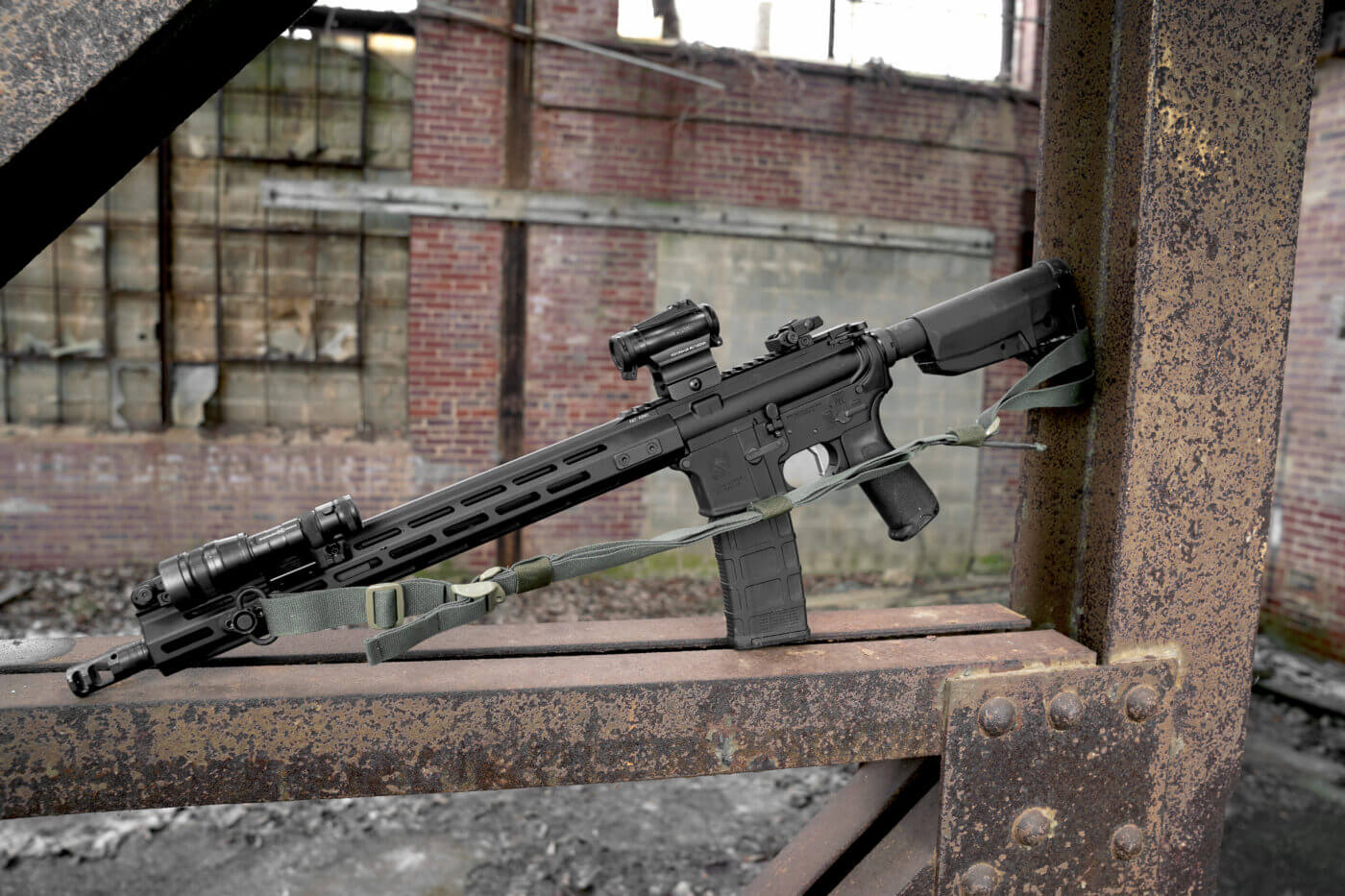
Springfield Armory takes the extra time to ensure that the gas key attached to the bolt carrier group is properly staked so that it actually stays attached to the BCG. The bolt is magnetic particle inspected and high pressure tested (MPI/HPT) to ensure durability.
Solid Foundations
Spend any time on the Springfield Armory website, and you will certainly run across the word “forged.” Springfield invests in quality forgings for its AR upper and lower receivers, and for good reason. Forgings result in a denser metal that is more machinable, has a better finish, and most importantly is more durable than castings used by many manufacturers. Also, both the upper and lower are coated with a Type III hard coat anodizing.
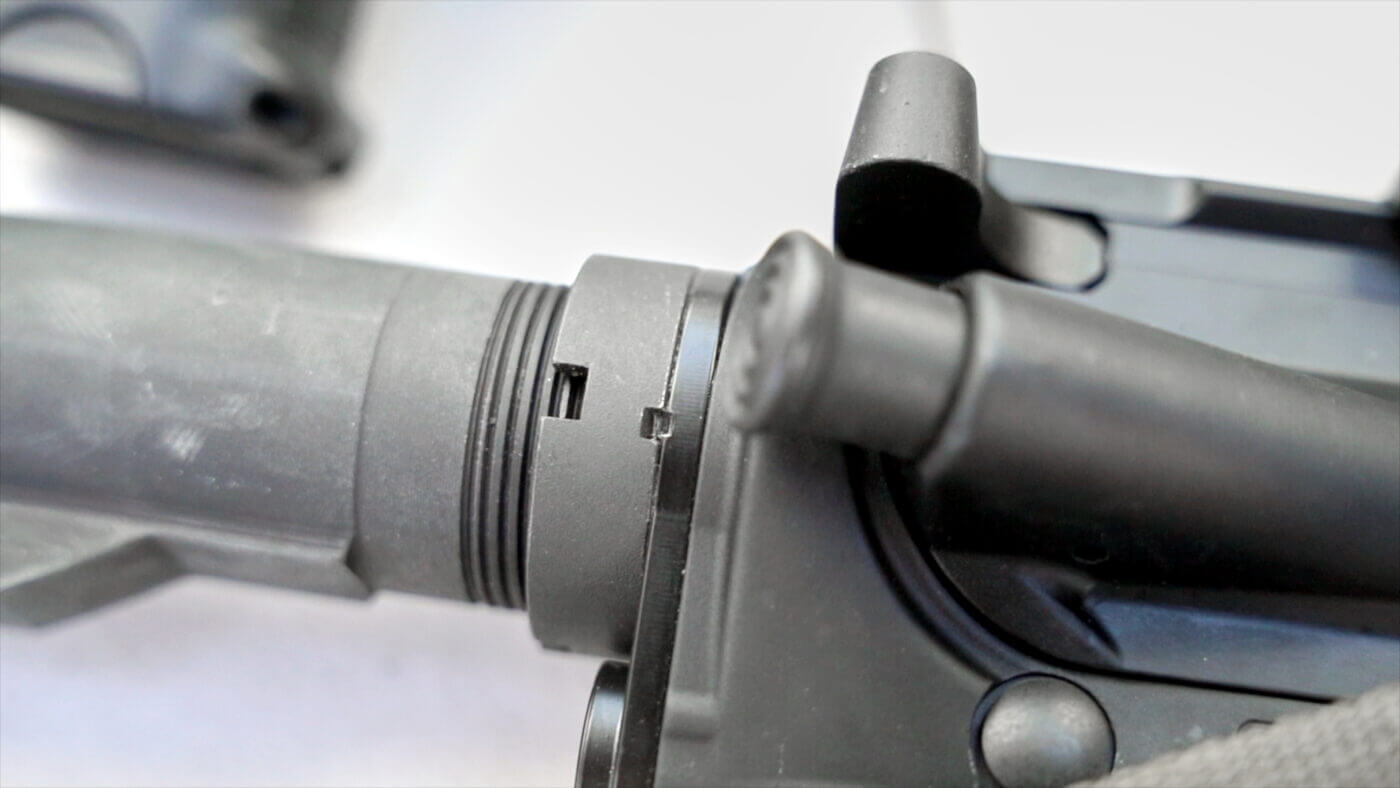
I really appreciate the barrels on my SAINT Victor and Victor SBR. The barrels are lightweight profiles, so they are maneuverable and accurate. All SAINT barrels feature extensions with M4 feed ramps and are nitrided inside and out for longevity.
The barrels and receivers are marked as multi-caliber, and the rifle can work with both 5.56 NATO and .223 ammo. My 16” SAINT Victor rifle has a mid-length gas system, and the SBR has a carbine-length gas system. Both of these are reliable with or without a suppressor.
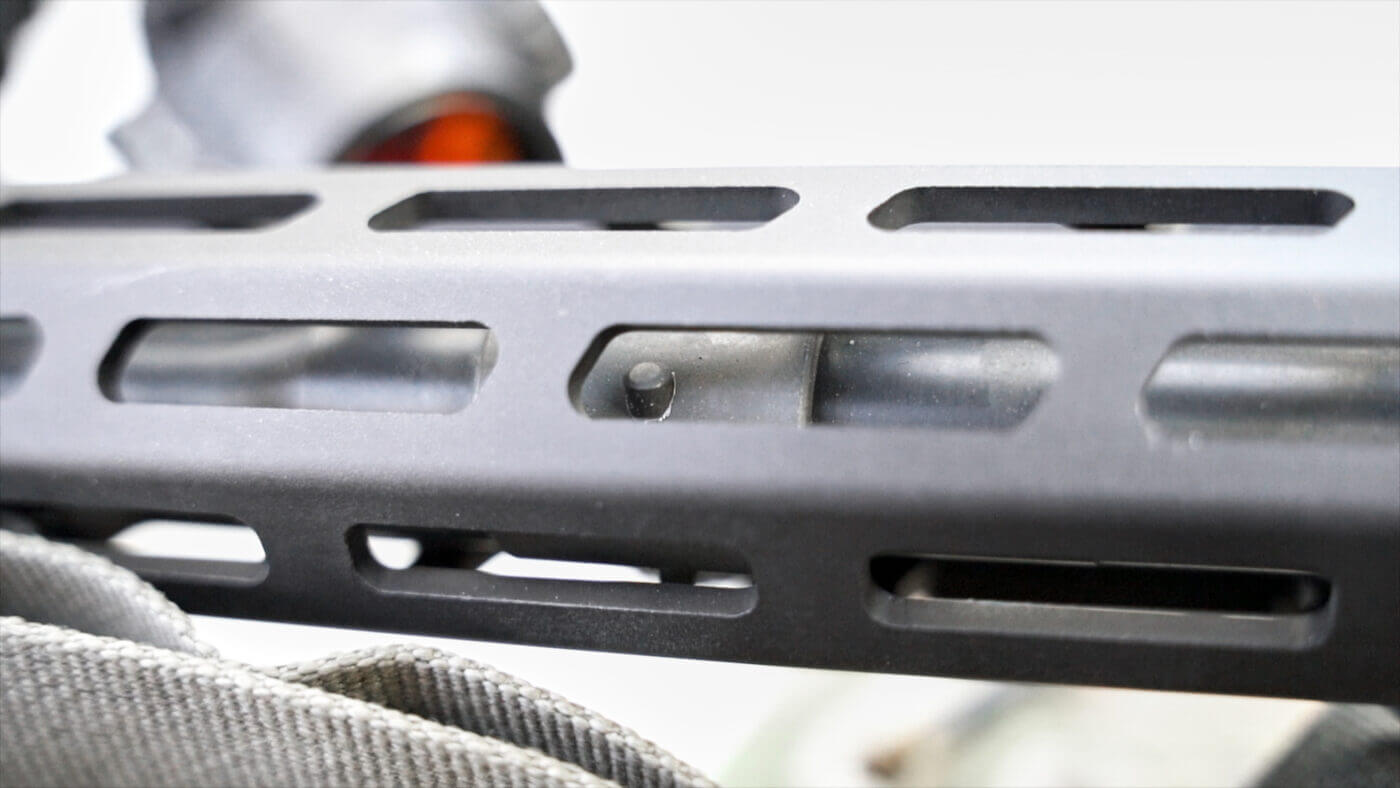
I mentioned how important it is for the gas key to be properly staked on the BCG. The gas block itself is equally important to the operation of your AR. SAINTs feature a tapered and pinned gas block. You don’t have to worry about a set screws on your gas block coming loose and shutting down your gun with the SAINT. The tapered pins will keep your gas block in place.
Duty grade also requires a duty grade trigger. The SAINT Victor triggers are nickel boron coated to provide corrosion resistance and to help make the trigger press smooth. It works.
ARs are systems. As a result, accessories need to be attached. The standard SAINT comes with a polymer BCM M-Lok handguard, which is certainly duty grade.
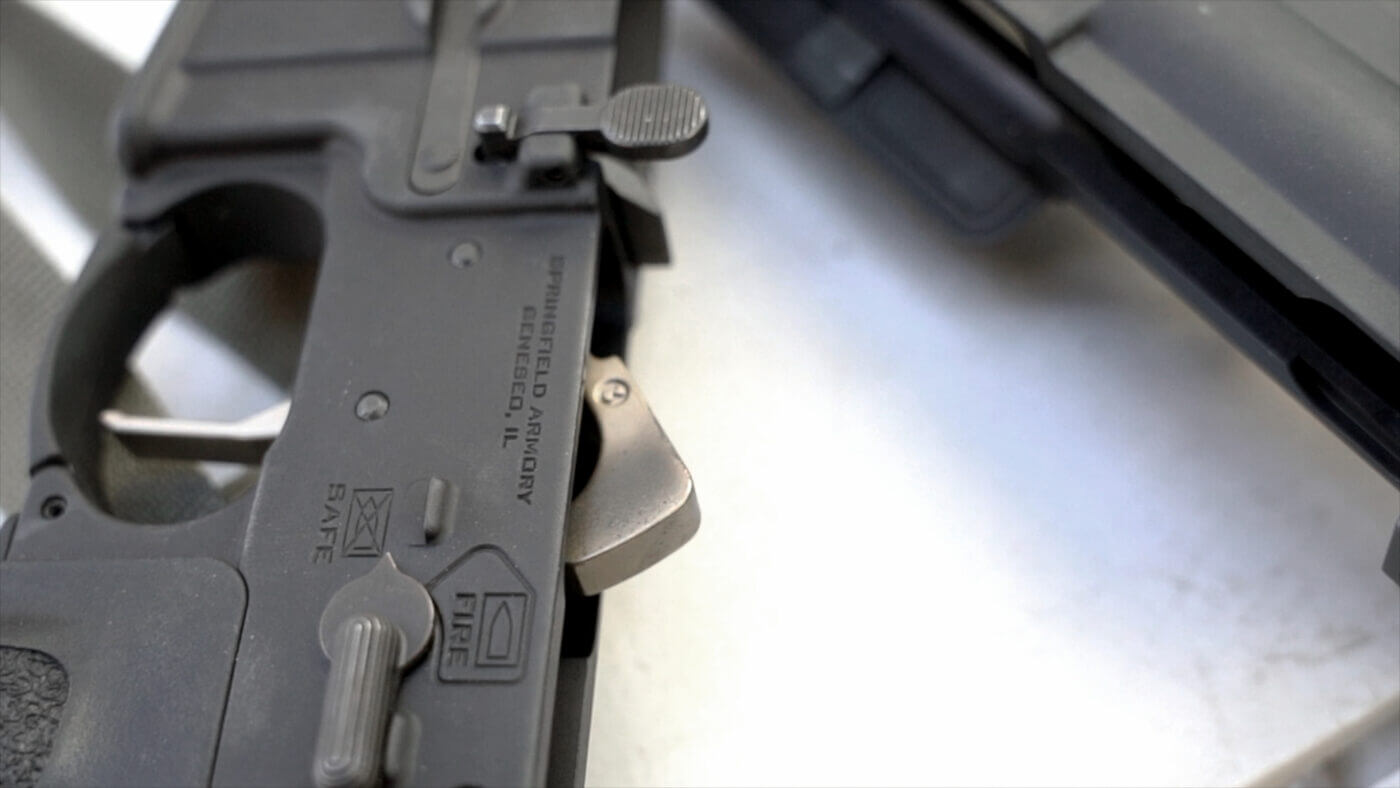
My Victors take it up a notch with a patent-pending, aluminum, free-float, M-Lok handguard. The 16” Victor has a 15” handguard with short Picatinny rail sections at 12 o’clock at the upper receiver and the muzzle end. Between the two is a blank ridge to help reduce weight. The Victor SBR has pic rail at 12 o’clock from front to back for additional mounting options.
Both handguards are attached to Springfield’s proprietary barrel nut with Springfield’s Accu-Tite alignment system. The handguards also feature ultra-low profile alignment plates on both sides that eliminate any movement. This is especially important on a duty-grade AR as the handguard often supports aiming devices such as iron sights or lasers.
SAINT Victor Specifications
| Caliber | 5.56 NATO (.223 Rem) |
| Barrel | 16″ with 1:8″ twist and Melonite finish |
| Muzzle Device | Springfield Armory muzzle brake |
| Upper | Forged 7075-T6 aluminum |
| Lower | Forged 7075-T6 aluminum |
| Finish | Type III hardcoat anodized |
| Bolt Carrier Group | Enhanced M16 |
| Gas System | Mid-length DI with low profile, pinned gas block |
| Trigger | Nickel-boron coated, flat face |
| Buffer | Carbine, H heavy tungsten |
| Receiver Extension Type | Mil-spec |
| Handguard | Free-float aluminum with M-Lok |
| Stock | BCMGUNFIGHTER Mod 0 |
| Sights | Spring-loaded, flip-up |
| Length | 32.25″ – 35.5″ |
| Weight | 6 lbs. 9 oz. unloaded |
Victor SBR Specifications
| Caliber | 5.56 NATO (.223 Rem) |
| Barrel | 11.5″ with 1:8″ twist and Melonite finish |
| Muzzle Device | A2-style flash hider |
| Upper | Forged 7075-T6 aluminum |
| Lower | Forged 7075-T6 aluminum |
| Finish | Type III hardcoat anodized |
| Bolt Carrier Group | Enhanced M16 |
| Gas System | Carbine-length DI with low profile, pinned gas block |
| Trigger | Nickel-boron coated, curved face |
| Buffer | Carbine, H heavy tungsten |
| Receiver Extension Type | Mil-spec |
| Handguard | Free-float aluminum with M-Lok |
| Stock | BCMGUNFIGHTER Mod 0 |
| Sights | Not included |
| Length | 27.5″ – 30.75″ |
| Weight | 5 lbs. 9 oz. unloaded |
Conclusion
There is no doubt that ARs can be versatile and fun guns. For many, however, the AR serves as a lifesaving tool. As a result, it makes sense that Springfield Armory takes that into account when building their AR-style rifles and pistols.
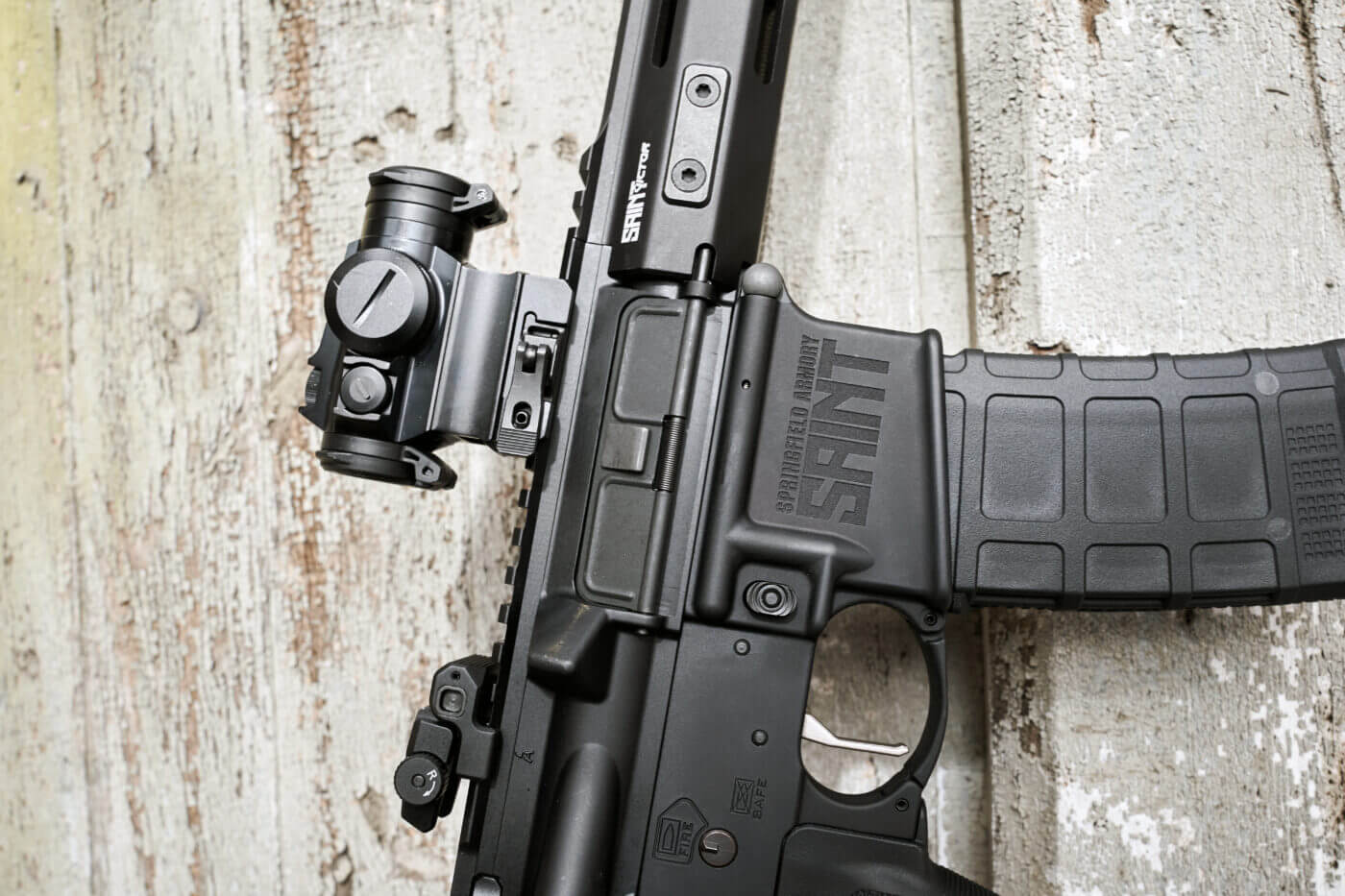
Regardless of how you intend to use your Springfield Armory SAINT AR-15, you can count on the fact that the engineers at Springfield have taken the steps required to ensure that your SAINT is duty grade and completely reliable.
I know that the time I’ve spent testing myself and my SAINT Victor AR-15s has helped to make sure that I am confident in my Victor’s status as duty grade and reliable for anything I might conceivably encounter.
Editor’s Note: Please be sure to check out The Armory Life Forum, where you can comment about our daily articles, as well as just talk guns and gear. Click the “Go To Forum Thread” link below to jump in!
Join the Discussion
Featured in this video
Continue Reading
Did you enjoy this video?

 195
195




